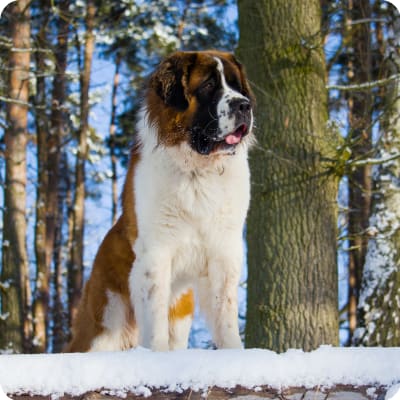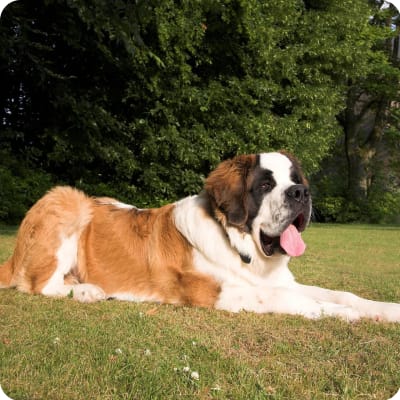Saint Bernard Puppies

A sweet, gentle, and playful family dog
The Saint Bernard is gentle, loving, laid back, and very friendly despite their large size making them seem intimidating. These dogs prefer spending time around those they love while also being protective if their family is threatened. Saint Bernards are playful, calm dogs that don't require a lot of exercise. Also referred to as a "nanny dog", the Saint Bernard's easy-going temperament and love for its family make for a great family pet.
Saint Bernard At a Glance




Saint Bernard At a Glance
- Size: 27"-30", 130-180 lbs.
- Lifespan: 8-10 years
- Energy Level: medium
- Coat: Smooth and fairly short
- Shedding: heavy
- Hypoallergenic: No
- Dog Group: Working
- Common Nicknames: Bernhardiner
Saint Bernard Breed Guide
Learn More About Saint Bernards


